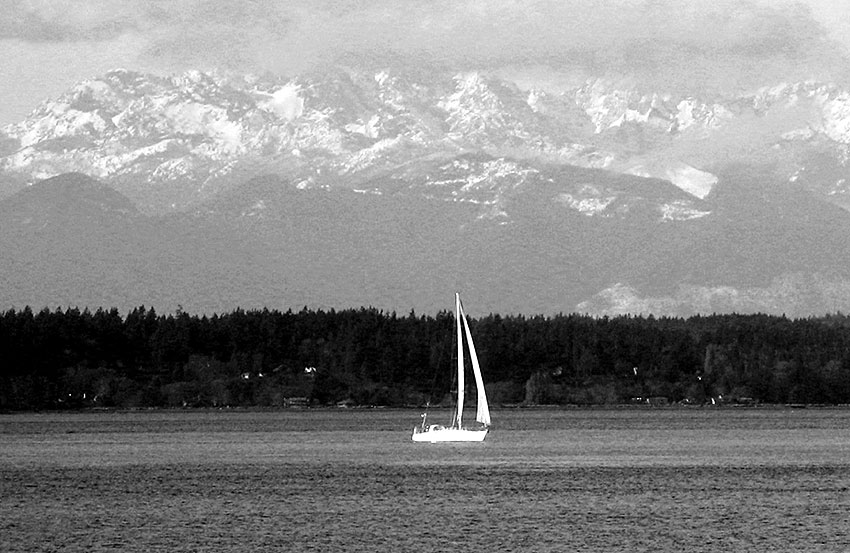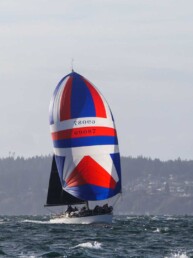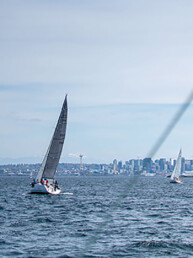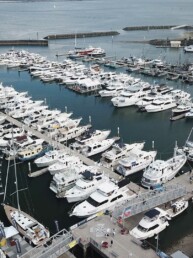 From the February 2008 issue of 48° North by Migael Scherer
From the February 2008 issue of 48° North by Migael Scherer
Most pleasure boats spend a third of the year idle at the dock, neglected orphans from January through March. It doesn’t have to be this way. Sure, the days are shorter, colder, often wetter. But the waters are also emptier, the harbors quieter, the beaches left to herons and gulls. On clear, frigid days, the air is like a polished lens that magnifies the mountains, bringing them closer to the sea.
Winter cruising isn’t just good for your spirit, it’s good for your boat. Unused, engines and pumps forget how to work. Condensation collects in tanks and fuel lines. Everything gets cold and vaguely damp. Keep your boat going through the winter, and it’s more likely to be running smoothly right into spring.
If you’re accustomed to fair-weather (Spring-Fall) boating, expect to make a few adjustments to your equipment. A safe, reliable heating source that’s properly vented is an absolute must. All systems must be in working order: engine, batteries, navigation and safety equipment, anchor tackle, and so on. Make sure your back-up systems are ready as well—that extra impeller, extra fuel, real (paper) charts.
But equally important to a successful winter cruise are a few simple attitude adjustments.
Let the Weather Rule
This is the time of year when serious storms move through Puget Sound. Pay attention to the 24-hour National Weather Service marine broadcast on VHF Channel 1 or 3; listen several times a day to get a sense of how weather systems are moving. Don’t ignore the obvious: increasing or shifting winds, thickening or lowering clouds, incoming fog. If gale warnings are posted for the weekend, change the destination or postpone the trip. Be realistic about the abilities of your boat, your crew, and yourself.
Keep Yourself and Everyone Else Warm and Dry
No matter what type of boat you have, sooner or later you’ll find yourself outside in nasty weather. For this you need clothing that keeps you dry for at least an hour in a sideways rain, and warm at 30 degrees or lower. Since we all overestimate how tough we are, bring along extra socks, gloves, and hats.
Your reliable heating source means you have a place below to warm up, but go the distance in winter to make boating even cozier. Keep a fluffy towel inside the hatch to dry off hands and face. Bring along your fuzzy slippers. Fill a thermos with hot water for instant hot drinks and soups. An old-fashioned, inexpensive luxury, the hot water bottle, goes a long way, especially if everyone has their own.
Take Time to Anchor Well
In winter, the lowest tides occur after dark, at times in the middle of the night. Use tide tables and detailed charts to figure out how and exactly where to anchor. Let out extra scope; you’ll sleep better if the wind increases or changes.
Guard Against Cabin Fever
If you’re accustomed to living in a house with separate rooms for separate activities, don’t expect to be comfortable for two days crowded into a space roughly the size of your kitchen. Too much closeness can sour a weekend. Have plenty of books, magazines, games, and puzzles so that everyone, kids especially, can entertain themselves through a spell of bad weather. Within reason, insist that everyone get off the boat at least once a day, if only to take a short walk or a row around the harbor.
Stay Close to Home
With short days and iffy weather conditions, winter is not the time for a long cruise. A good rule of thumb is to stay within a radius of 10-20 miles, even if you have a fast boat. It’s only a short run home if the weather gets rough and you’re forced to slow down (for comfort and safety–this is supposed to be fun, remember?).
If you have plenty of time to wait out bad weather, you can extend your range by hopping from one safe harbor to another. Consider this a big “if”, since you may need to wait two days or more. The rewards are also big, as one cruiser discovered when he woke to snow falling at Chatterbox Falls.
If you have plenty of money (another big “if”), you can bypass all this advice by going to a place where it’s not winter.
Go Nowhere
Don’t wait for a free weekend, or insist on a destination. On a calm, clear day, simply take the boat away from the dock and head for the middle of the bay. Cut the engine, drop the sails, and drift. Bundle up and enjoy a winter picnic on your own small, floating island. Relish the 360 degree views. Going nowhere at all could be your most memorable voyage of the year.
Winter Weekend Destinations
Here are a handful of weekend destinations close to home, with good protection from winter storms.
Seattle Area:
• Port Madison (inner harbor); excellent anchorage. No moorage, limited public shore access, no facilities.
• Blake Island (marina only; anchorage exposed); entire island is a State Park. Showers, picnic tables, barbeques, play equipment.
• Bell Harbor Marina; downtown Seattle waterfront. Showers, water, laundry, restaurants, shops, museums.
Everett Area:
• Langley (inside marina only; anchorage exposed); restaurants, grocery, galleries, waterfront park. Showers and laundry.
• Port Ludlow; excellent protection either at anchor or at marina. Restaurant and small store. Showers and laundry.
• Jetty Island; park and wildlife preserve with limited (one night) moorage. Trails, beach, no facilities.
Tacoma Area:
•Quartermaster Harbor; excellent protection at anchor and at marinas (Jerisich Park or Arabella’s Landing). Showers, water, restaurants, galleries, shops.
• Quartermaster Harbor; protection at Dockton County Park marina and at anchor. Showers, picnic tables, play equipment.
• Thea Foss Waterway; guest moorage in front of Museum of Glass. Restaurants, museums.
Olympia Area:
• Filucy Bay; protection at Longbranch marina and at anchor. No shore facilities.
• Jarrell Cove; excellent protection
at anchor and at marina. Marina has fuel, groceries, showers and water. Showers, picnic tables, barbeques at State Park.
• Percival’s Landing; downtown Olympia waterfront. Showers, restaurants, shops.
Migael Scherer is the author of “A Cruising Guide to Puget Sound and the San Juan Islands and Back Under Sail: Recovering the Spirit of Adventure.”






